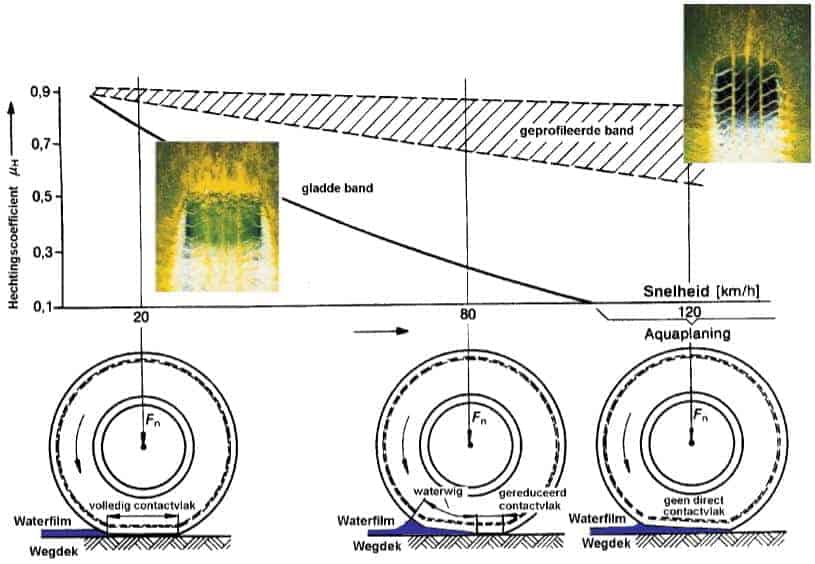Subjects:
- aquaplaning
- Trading in aquaplaning
aqua planing:
Aquaplaning means that a water film is formed between the road surface and the tire of the car. The tire then loses grip more with the road surface and 'floats' as it were. This makes the vehicle uncontrollable. The risk of aquaplaning is increased by driving due to ruts in the road surface, tires with low profile depth, under-inflation, a car with little weight in combination with wide tires, too high a speed, or a combination of everything.

The image shows a band with less than 2,5mm profile in the middle. Because less water can be drained during rainfall than a tire with, for example, more than 5 mm profile, the risk of aquaplaning, and therefore also the risk of collisions, will increase. It is therefore wise to have tires with less than 2,5 mm profile replaced.

How to deal with aquaplaning:
When accelerating during aquaplaning, the wheel without traction will spin faster and only splash water between the tire and the road surface. By braking, the water film between tire and road surface will decrease, but then there is a chance that when the tire has contracted with the road surface again, it will have too low a speed and in this way there is a risk of skidding again because the speed of the wheel is too low. is low. It is therefore best to let go of the gas and brake on the engine until there is contact with the road surface again. Then the speed can be adjusted again.
